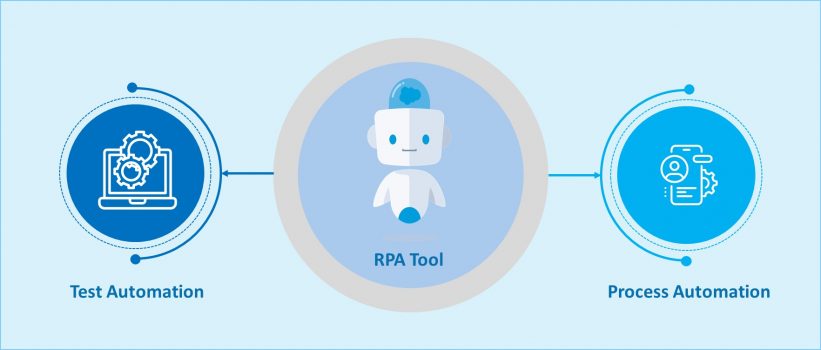Purpose of the article: The purpose of this article is to discuss RPA (Robotic Process Automation) tools and test automation tools, highlighting their similarities and discussing how RPA tools can be effectively leveraged for functional automation. Also, explore the advantages and challenges of integrating RPA into the testing process, offering insights into maximizing its potential for streamlined and cost-effective automation solutions.
Intended Audience: Automation Engineers /QA Managers/ QA Director/QA Organizations
Tools and Technology: RPA Tools (UiPath, Automation Anywhere, Blue Prism)
Keywords: Test Automation, RPA, Robotic Process Automation,
Introduction
We are living in a digital era where software applications take center stage across all industries. Ensuring the reliability, functionality, and quality of these applications has become top priority for businesses. Functional test automation plays a crucial role in this process, enabling organizations to save time, reduce errors, and ensure consistent testing procedures.
Simultaneously, organizations are embracing innovative approaches to enhance customer service and retention while maintaining a focus on cost optimization. Robotic Process Automation (RPA) is one such innovation which reduces the time of operations and increases efficiency. According to Gartner, “Robotic process automation (RPA) is a productivity tool that allows a user to configure one or more scripts (which some vendors refer to as “bots”) to activate specific keystrokes in an automated fashion. The result is that the bots can be used to mimic or emulate selected tasks (transaction steps) within an overall business or IT process. These may include manipulating data, passing data to and from different applications, triggering responses, or executing transactions”.
Robotic Process Automation (RPA) tools have disrupted the way business operations are carried out. Due to their capabilities and similarities with functional test automation tools, organizations are now thinking to leverage RPA tools for test automation to be cost effective.
The Evolution of Functional Test Automation
The Functional Test Automation has emerged as major trend in software industry over the years, shifting from code-based tools to the emergence of low-code and no-code test automation solutions. Initially, tools like Unified Functional Testing (UFT) and Selenium demanded extensive scripting skills, requiring testers to write framework and code for automated testing. While they provided powerful capabilities for Web, API, and even Mobile testing, they had a steep learning curve.
Advancements in technology spurred the emergence of low-code/No-Code platforms such as Tricentis TOSCA, Worksoft, and Katalon. These tools incorporated visual testing components, minimizing the need for extensive coding. Testers gained the ability to design and execute test scenarios through intuitive interfaces, expanding platform coverage to include Web, API, Mobile, and Desktop/Windows applications.
The Emergence of Robotic Process Automation Tools
Robotic Process Automation (RPA) tools emerged to automate repetitive, rule-based tasks in businesses, freeing up human resources and reducing errors. Developed in the early 2000s, RPA gained traction over the last decade with advancements in technology. Tools like UiPath, Automation Anywhere, and Blue Prism offer user-friendly interfaces and diverse automation capabilities across industries like finance, healthcare, and customer service. RPA has become a transformative technology, enhancing efficiency, cost savings, and scalability globally.
Use of RPA tools for Functional Test Automation
In the realm of functional test automation, organizations often struggle with the dilemma of investing in separate tools for testing and Robotic Process Automation (RPA). Integrated solutions are gaining traction as they offer efficient support for both test automation and RPA, featuring actions, validations, data management, error handling, and reporting capabilities. These tools ensure compatibility with various applications, maximizing utility in evolving technological landscapes. Combining test automation with RPA offers a cost-effective and efficient approach to optimize automation.

Challenges Using RPA Tools for Functional Test Automation
While RPA tools offer numerous benefits for functional test automation, there are some considerations and challenges to keep in mind:
- Learning Curve: Adapting to RPA tools, especially for those unfamiliar with no-code/low-code, may require time for testers and QA teams.
- Script Execution Mechanism: RPA tools necessitate script development and publication as builds, aiding versioning but potentially consuming significant storage space.
- Frequent Script Publishing: Minor or major script changes in RPA tools require publishing to an orchestrator before use, adding extra steps and possible delays in testing.
- Different License Structure: RPA tools may have distinct licensing structures compared to traditional automation tools, leading to cost variations and procurement complexities.
- Version Update Challenges: The newer nature of RPA tools may result in frequent version updates, causing compatibility issues and requiring adjustments to scripts and workflows, posing challenges for test automation maintenance.
Advantages of Using RPA Tools for Functional Test Automation
Initially created for automating repetitive business processes, RPA tools have expanded to include functional test automation, offering numerous advantages for organizations seeking to improve their testing procedures.
Cost-Efficiency: Using an RPA tool for both business process automation and test automation saves on tool investments, boosting ROI.
Shared Knowledge Pool: Common tools foster collaboration between teams, sharing expertise in both test automation and business process automation.
No-Code/Low-Code: RPA tools offer user-friendly environments, enabling testers to create and modify cases without extensive coding.
Cross-Platform Compatibility: RPA tools work across various applications, reducing the need for multiple specialized tools.
Integration Capabilities: RPA tools integrate seamlessly with other testing tools and DevOps pipelines, streamlining development and testing processes.
Conclusion:
RPA tools are transforming functional test automation with their user-friendly, efficient, and versatile approach. Despite challenges, including adaptation and trade-offs, the benefits of RPA in testing are making it indispensable in the modern toolkit. As organizations embrace RPA, they are better equipped to excel in the dynamic digital landscape.
Author Bio:

Prithviraj R Patil
IQE - Sr. Manager
A seasoned Senior Manager with 18+ years of experience in QA & Automation testing. Experience across domains including Energy, Hi-Tech, Financial Services, and Investment Banking. Expertise in testing proposals & solutions, Onshore & Offshore delivery model, automation framework enhancement, managing & delivering test automation projects on wide range of automation testing tools like UFT, Worksoft, UiPath, Selenium and Appium.


